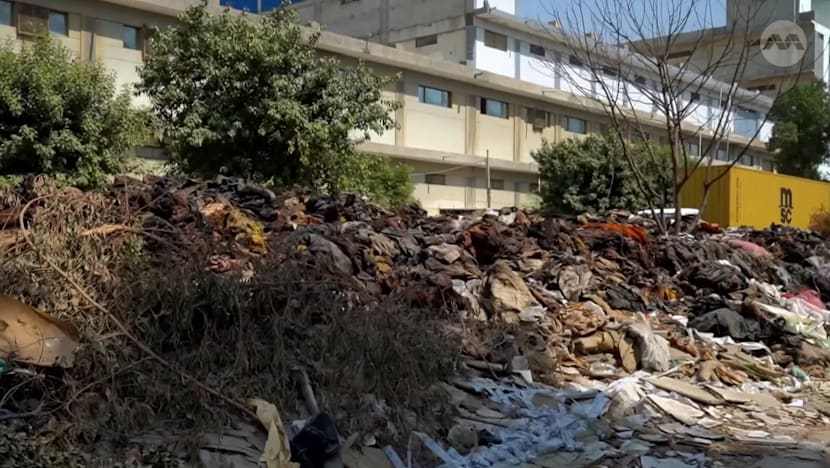Pakistan’s booming secondhand clothing industry raises environmental concerns
The country lacks the infrastructure to manage and dispose of its mounting rubbish, including an estimated 270,000 metric tonnes of textile waste it produces each year.

Secondhand clothes pile up at a dumpsite in Karachi, Pakistan.

This audio is generated by an AI tool.
KARACHI: Growing poverty levels and soaring inflation have pushed millions of Pakistanis to rely on secondhand garments, transforming the country’s used-clothing market into a billion-dollar industry.
But with it comes a mounting environmental cost.
Every day, truckloads of used garments from the European Union, the United Kingdom, the United States and other Western nations arrive in Karachi’s export processing zones.
They are destined for factories such as Silver Denim, where workers sort piles of clothes by quality before they are treated for re-export to African markets or distributed across Pakistan.
BECOMING MAINSTREAM
Once stigmatised, wearing pre-owned clothes is becoming mainstream in the South Asian nation.
“The mindset has changed. It's changing. Gen Z has become very aware of saving a lot of things on earth; saving the environment,” said Silver Denim’s director Umair Yousaf.
“They (also have) online access to all the brands, all the kinds of clothing that comes in,” he noted, adding that business has never been better.
Yet, in a country where nearly 45 per cent of the population lives below the poverty line, affordability remains the main driver behind the trend.
According to the Pakistan Business Council, the nation imported nearly US$511 million worth of used clothing between July 2024 and June this year – an 18 per cent increase from the previous fiscal period.
Most of that volume is re-exported, but traders estimate that 10 to 20 per cent ends up in local markets across cities.
At these markets, secondhand garments sell for as little as US$2 to US$4 per piece, which is much cheaper than locally made new garments that can cost between US$18 and US$25.
The import and reuse of second‐hand textiles in Pakistan is deeply linked to global patterns.
A 2023 report by the All Pakistan Textile Mills Association and other authors found that the EU exported around 1.4 million tonnes of used textiles or unwanted clothes worldwide in 2021, with Pakistan among the key destinations. That year, the EU shipped secondhand clothing worth US$46 million to Pakistan.
NOT A “DUMPING GROUND”
However, not all items exported to Pakistan make it to store shelves.
When garments arrive in poor condition, many end up discarded, dumped, or even burned, adding to the country’s growing waste problem and contributing to global climate change.

Pakistan lacks the infrastructure to manage and dispose of its mounting waste, including an estimated 270,000 metric tonnes of discarded textile each year.
Karachi, Pakistan’s largest city and home to more than 20 million people, has only three sanitary landfill sites and no dedicated textile waste processing units.
Environmental experts are urging the government to tighten regulations on used clothing imports.
“The third world should not be used as a dumping ground by the first world,” said Sohail Yousaf, professor of environmental sciences at Quaid-i-Azam University.
“Legislation is needed. We should ban this because only few people are getting benefits from this business but actually, (for) a lot of members of the public, their health is damaged. Their environment is damaged.”
To tackle the problem, the government has urged companies to adopt sustainable fashion practices such as recycling, upcycling and promoting locally made eco-friendly clothing.
But climate scientists warn that without global reforms and stronger safeguards, Pakistan will continue to shoulder the environmental toll of the world’s discarded clothes.














